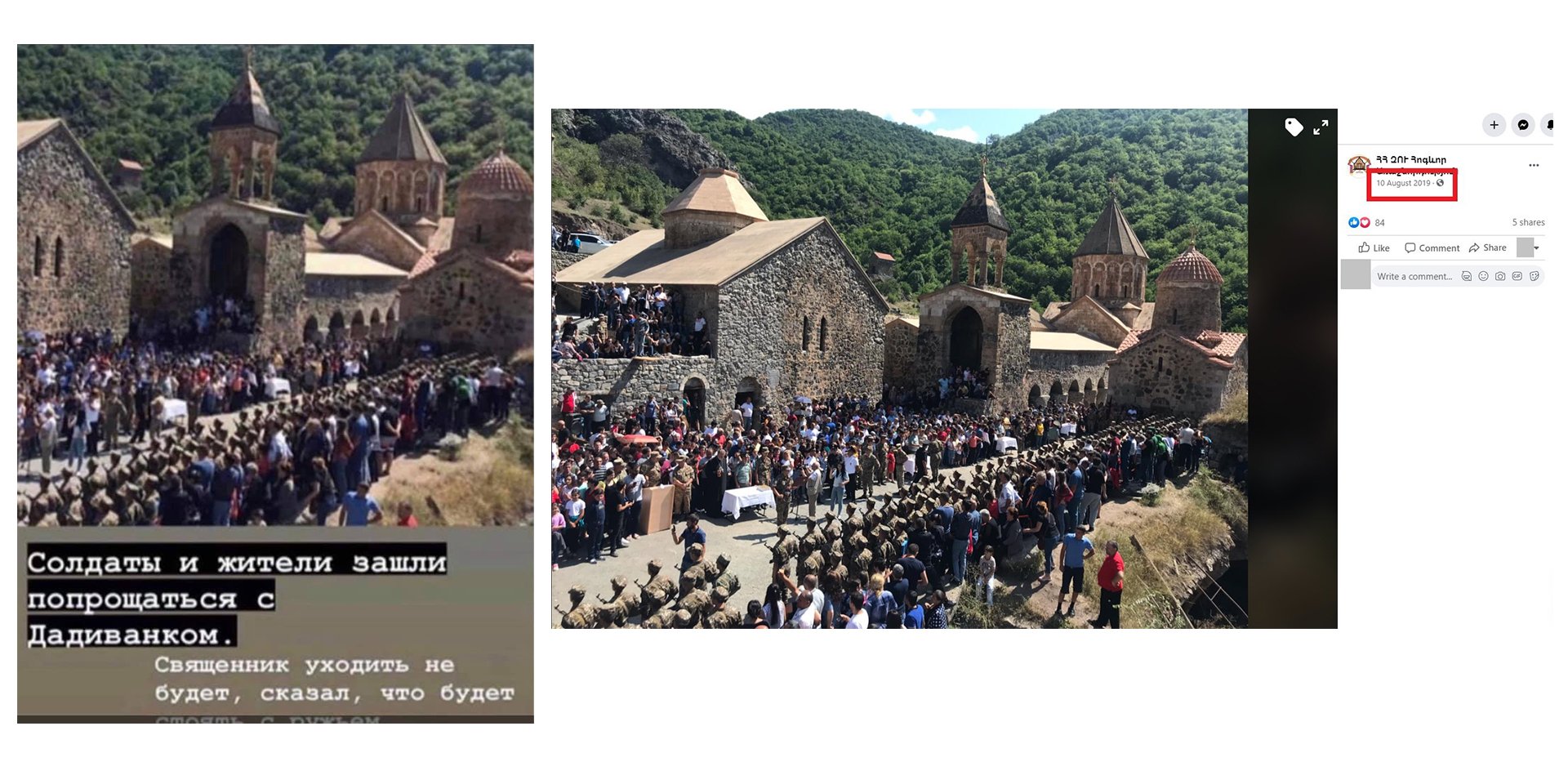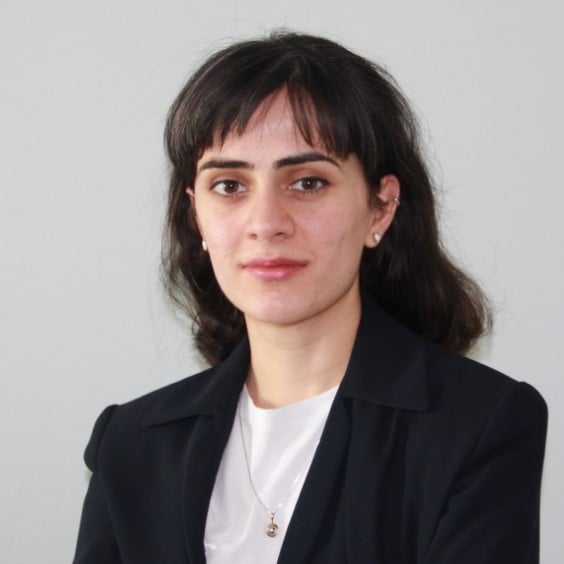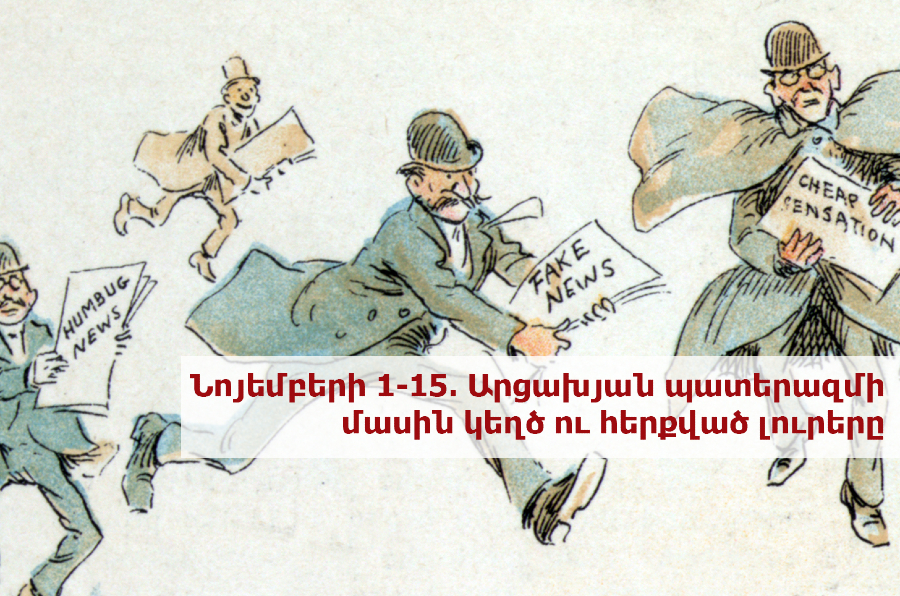The joint statement of Armenia, Azerbaijan and Russia on the ceasefire was preceded by informational confusion about the occupation of Shushi. The statement was followed by false and unverified rumors about peacekeepers, international statements on the conflict, and possible consequences.
Conflicting rumors about the capture of Shushi
On November 9, hours before the ceasefire agreement, the spokesman for the President of the Republic of Artsakh, Vahram Poghosyan, wrote on his Facebook page that Shushi was completely under the control of the enemy.
This post raised doubts: both users and the media assumed that Poghosyan’s page could be hacked. Poghosyan, however, soon confirmed that he was the author of the post and the information is correct.
The informational confusion increased even more when, two hours after Poghosyan’s post, Prime Minister Nikol Pashinyan announced that the fighting for Shushi was continuing.
On the same night, however, it became clear that Shushi was occupied and that Armenia had signed a ceasefire agreement.
The UN spoke of mercenaries, not terrorists
On November 11, the Office of the UN High Commissioner for Human Rights issued a statement on the transfer of mercenaries from Turkey to Azerbaijan. Baku and Ankara continued to deny this information, UN experts confirmed that mercenaries from Syria had indeed moved to the South Caucasus.
Armenia called these fighters “jihadists” or “terrorists.” The UN, however, did not use such terminology. Despite this, Public Television’s website, Los Angeles-based Zartonk Media and other news outlets covered the report with the slogan “the terrorists must be removed.”
In its report, the UN stated that the Syrian fighters transferred to Azerbaijan corresponded to the definition of “mercenary.” You can listen to why the definitions of “jihadists” or “terrorists” are not as applicable in this case in the newest episode of media.am’s “A Topic To Dig Deep Into” podcast.
The head of the peacekeeping force is a Tabasaran not an Azerbaijani
On November 11, Lieutenant General Rustam Muradov was appointed head of the Russian peacekeeping force in Artsakh. On the same day, an anonymous user added on his Wikipedia page that Muradov is of Azerbaijani nationality.
This information was spread across the Azerbaijani propaganda media field, then reached the Armenian audience.
❌ The information was false: Muradov was born in the Republic of Dagestan, which is part of Russia. Tabasaran are one of the indigenous peoples of Dagestan.
The “Fake Factory” was a fake
On November 13, a video appeared on social networks, in which a group of citizens “discovered” a fake factory that would swear at the mothers of soldiers.
It soon became clear that the “fake factory” was the office of Ingo Armenia Insurance Company. Ingo Armenia announced that the normal work of the office was disrupted and the company had called the police.
Media.am studied the video and found out that it was indeed shot in the office of Ingo Armenia, and the citizens who broke in are connected with the extreme conservative movement “VETO” and the analitik.am news site.
A number of incorrect or fake images were spread on social networks
In early November, several misconceptions about the Artsakh conflict were spread on the Internet.
❌ The map by which the southern border of Armenia had allegedly crossed over to Azerbaijan was wrong, no such point exists in the agreement that was signed on November 9. Despite that, the map has been spread across social networks. Ani Chkhikvadze, a journalist with the Voice of America, published it on her Twitter page without citing any sources.
Some are posting this a new agreed boundaries of the territory that Aliev presented. Armenia’s border with Iran seems erased here. It’s not confirmed and may be wrong. #Nagorno_Karabakh pic.twitter.com/TYKsrVd30v
— Ani Chkhikvadze (@achkhikvadze) November 9, 2020
❌ A photo of Armenian soldiers and residents saying goodbye to Dadivank was spread on Facebook.

Though many people really did go to say goodbye to Dadivank over the past few days, this photo is old․ It was published in 2019.
❌ After the signing of the ceasefire agreement, a fake letter from Nikol Pashinyan to NATO leader Jens Stoltenberg started circulating on social networks again. A copy of this document had also appeared in the summer. Media expert Samvel Martirosyan spoke about it in detail in his podcast.
❌ The Russian website Planeradar.ru depicted the Turkish “Bayraktar” drone as flying in the vicinity of Yerevan. This image was spread across social networks. Other flight monitoring sites did not show such a thing. Moreover, the “Bayraktar” was pictured at the same point on Planeradar.ru for several hours without moving, which may indicate a malfunction of the site. The Ministry of Defense denied this information, calling it a “lie.”
The Foreign Ministry refuted the Prime Minister
On November 16, Foreign Ministry spokeswoman Anna Naghdalyan stated on her Facebook page that “at no stage of the peace process was there a question of renouncing the city of Shushi.”
Earlier, Prime Minister Nikol Pashinyan had announced that Armenia could have avoided war if it had “handed over seven regions to Azerbaijan, including Shushi.”
On the same day, Zohrab Mnatsakanyan’s resignation from the post of Foreign Minister was announced.
France did not raise the issue of Hadrut
Two of the three co-chairs of the Minsk Group, France and the United States, did not take part in the signing of the ceasefire agreement. After the signing, the President of France Emanuel Macron issued a statement, noting that the peace process should ensure that the people of Nagorno Karabakh can stay in their homes and the displaced return home. The same was announced by the French Foreign Minister.
The statements of France in the Armenian domain of the Internet were interpreted with some mistakes. Thus, the media spread the information with the headline “France raises the issue of Hadrut and other settlements.”
In reality, the statements did not mention Hadrut.
Denials
? The spokeswoman for the Minister of Health Alina Nikoghosyan denied the information that was spread by Serzh Sargsyan’s son-in-law and former RA Ambassador to the Vatican, Mikayel Minasyan, that the Armenian side has 4,750 victims. According to Nikoghosyan, the process of exchanging bodies is still going on, at this moment no one knows the final number of victims.
? The Ministry of Defense denied the information that Minister Davit Tonoyan sold weapons to Turkey and was involved in corrupt deals. The Ministry of Defense called the information a “brazen lie.”
Karine Ghazaryan







